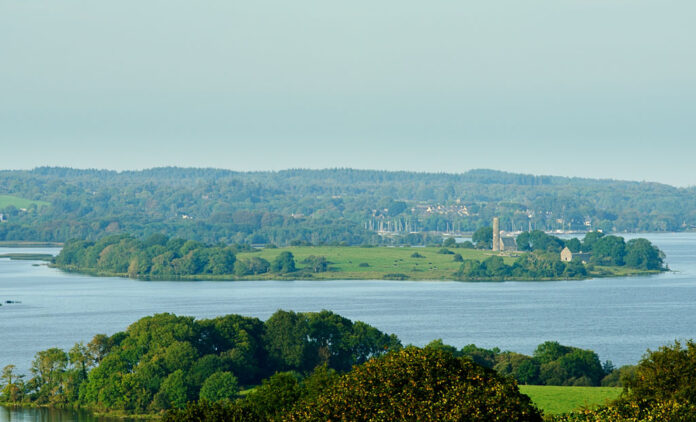A series of remedial measures are needed to improve the water quality in Lough Derg, a major €500,000 angling project has revealed.
Dr Fran Igoe, who is one of the promoters involved in a ground-breaking 10-year research programme into native Lough Derg fish species, claimed the water quality of the lake is mostly moderate to poor, with only a few sections classified as good.
The regional co-ordinator for the Local Authority Waters and Communities Office Southern Region said water quality needs to be improved by involving all stakeholders in forestry, agriculture, wastewater treatment systems and septic tank owners.
“Water quality in the lake underpins angling and tourism. It is important that people join the dots, so a better appreciation develops on the importance of managing the land near the lake properly,” Dr Igoe noted.
The status of the lake and contributing rivers is based on a combination of water quality and habitat. The study noted that the quality of the trout fishery in the lake will decline if water quality is not addressed.
More than €355,000 was spent on genetic work there and it is estimated that an additional €150,000 was funded through Leader, the EPA, the Heritage Council, Tipperary County Council, the Irish Char Conservation Group, private donations and volunteers.
Researchers from Queen’s University, Professor Paulo Prodohl and PhD student Jamie Magee presented their findings to a recent meeting in The Lakeside Hotel, Killaloe. The attendance included members of fishing clubs, Inland Fisheries Ireland, Tipperary County Council, the Lough Derg Science Group, the Irish Char Conservation Group and the Local Authority Waters and Communities Office. The main purpose of the meeting was to report on the result of genetic work carried out on more than 4,600 juvenile trout and 1,600 adult trout caught by anglers on the lake.
Professor Prodohl said this project was one of the biggest of its kind in Europe, thanks to the scale of the citizen science element. “There are not many projects in Europe or beyond that are of that order of magnitude.”
Anglers collected tissue samples from fish captured on the lake and prepared the samples according to requirements, before sending them to Queen’s University for analysis.
The researchers presented samples taken by members of the Lough Derg Anglers Association and visiting anglers to the lake and larger tributaries such as the Nenagh River and the Cappagh-Kilcrow River and Inland Fisheries Ireland (IFI) and the ESB on spawning streams. In total, six main tributaries and 60 smaller ones were surveyed.
Some of the key findings to date are that the trout biodiversity is very high and should be managed properly.
Key to the project are the anglers who fish the lake for trout but also other fish species. According to one researcher, “the quality of the samples were excellent”.
The researchers emphasised that despite extensive environmental damage to many spawning streams, such as drainage, weirs and pollution, the trout population is intact but cannot be taken for granted.
There is no evidence, however, that the Gillaroo trout species still exists in the lake, despite evidence of the species in the historic literature.
The Croneen trout is in Lough Derg, based on the genetic analysis proving for the first time that this unique ‘sea-like trout’ does indeed feed in the lake. Previously, it was known to spawn in the Little Brosna and Camcor Rivers but no one knew where the adults lived after they left the rivers as juveniles.
The genetic analysis proves that they do indeed, or at least many of them, migrate to Lough Derg. However, they seem to have a different physical appearance in the lake, which needs further investigation. While the Croneen has adapted to its surroundings in the Camcor, it is not recognisable as a species in its own right. According to scientists, it is an important genetic “conservation unit”.
Most of the fish are concentrated in the south part of the lake.
Dr Igoe told the meeting the lamprey found in the lake, which attack trout and pike, do not seem to have an overall effect on the health of the fish. The project identified them as sea lampey, which is the first time they have been officially and scientifically identified.
It would appear that the sea lamprey are opportunistic visitors to the lake and do migrate back out to sea.
The rare Pollan has not been recorded recently but netting by anglers in the Lough Derg Native Fish Biodiversity Project found evidence that they are still there but in small numbers and that the stock has become depleted.
Dan Minchin of the Lough Derg Science Group showed it is possible that Pollan may migrate from Lough Ree to fill the void.
Ruairí Ó Conchuir of the Local Authority Waters and Communities Office also presented information on the new draft River Basin Management Plan, which is available for download and comment on the Department of Housing, Planning, Communications and Local Government’s website.
A native of Ennis, Colin McGann has been editor of The Clare Champion since August 2020. Former editor of The Clare People, he is a journalism and communications graduate of Dublin Institute of Technology.


